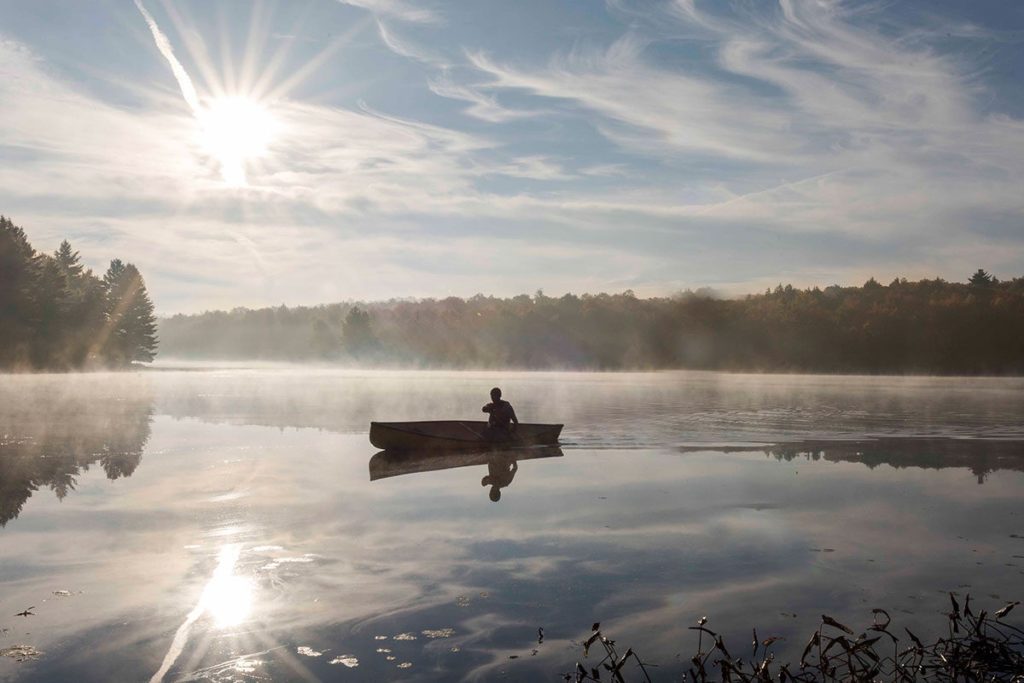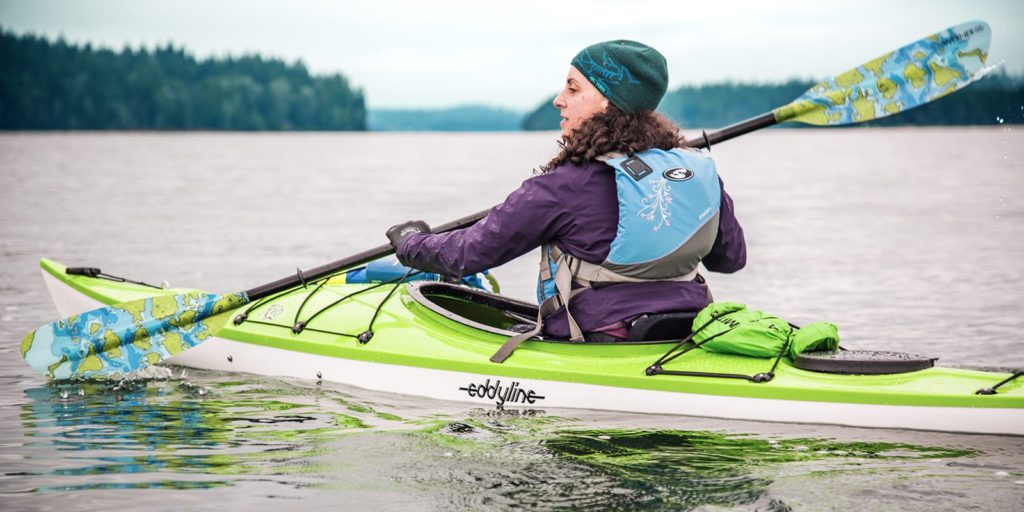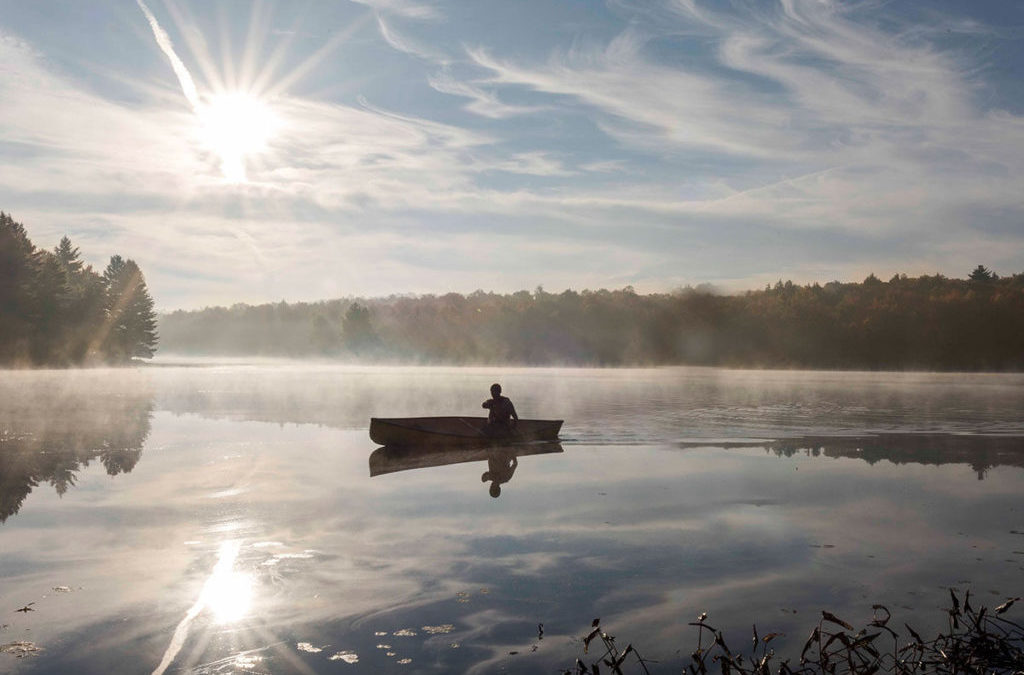Having new sports to explore is an important aspect in life. One sport, such as kayaking, is a great way to gain a new skill. However, it is important to have knowledge about Kayaking Safety and gear. Knowing a few aspects will make your adventures on the water more enjoyable and less likely to result in an emergency situation. Let’s begin by discussing safety. As stated earlier, one of the primary concerns of any paddler is obviously safety and what to wear when kayaking. However, there are other concerns that are just as important such as comfort, equipment, skill development and so forth.
When it comes to safety, there is one factor that trumps all others and, if you ignore this factor, your chances of having a kayaking experience that ends in tragedy is virtually 100%! What factor is this? The answer is simple… you must dress in a way that is appropriate for the water conditions! Many paddlers don’t understand the importance of this and simply wear whatever they happen to be wearing that day that provides them with “comfort” while out on the water. Comfort is important but not at the expense of safety. Listed in this article are factors to consider, and what to wear when kayaking.
Popular Articles : what to wear when kayaking?
Check the Weather
Dressing in a way that is appropriate for the water conditions is important, but how do you know what those conditions are? The best way to find this information is by reading the weather forecasts before you go on any kayaking trip. Not only will this give you a sense of what to expect, it will also allow you to modify your clothing and gear as needed so you are properly prepared for whatever Mother Nature decides to throw at you.
Let’s begin by discussing clothing. Many people think they are prepared for adverse weather conditions when in fact, they are not. If you read the forecast for wind and waves for where you are going to paddle, you should modify your clothing accordingly.
Let’s say you are planning to go out on the water at Lake Erie in Cleveland. The forecast might state that the winds will be from the north at 20 mph with gusts to 30 mph. If this is the case, you should wear a long-sleeved shirt and a hat with a brim that covers your ears. You should also carry a light waterproof shell or jacket that fits over your other clothes. If the weatherman says there will be little or no wind, you should remove your jacket, tie your shirt, and wear a vest.

Move Freely
Freedom is important in sports like this. Most paddlers go one step further by wearing lightweight, high-performance dry-gear so they can move freely and quickly if an emergency situation arises. It is the bare minimum gear you need to survive a kayaking trip. If you are wearing bulky clothing or have a restrictive style of footwear, you will be much more likely to have an injury that will impede your ability to get out of trouble and make it safely back to shore. Don’t forget your helmet! Helmets save lives. They keep your head cool and preserve your brain function. When used properly, they also reduce the risk of serious injury or even death from a head trauma.
Let’s talk about footwear next. Most paddlers wear lightweight athletic shoes or boots with a good non-slip sole. Some people like to use boots instead of shoes because they provide more support. If you are going to wear boots, you should wear socks made from a lightweight material such as polypropylene. Also, you should try to find boots with a ghillie (or duck) pattern on the bottom.
Moreover, you should look for “anti-conduction” soles on your footwear. These are thin rubber or plastic layers that act like insulation and help prevent the blisters that are caused by the heat from your feet being transferred to the inside of your shoes. Blisters are very painful and can become serious medical conditions if they are not treated promptly. You should always wear a life jacket.
A properly fitted PFD (Personal Flotation Device) will keep you afloat and maintain an adequate air supply until you are rescued. If you are going to use a PFD, you should use one that fits well and has enough buoyancy to keep you floating. Don’t use a PFD that is too constricting; this will reduce your ability to move freely and could cause you to become entangled in your lines or other gear. You should also wear a hat that has a brim that covers your ears. This keeps the sun out of your eyes, prevents your head from getting hot, and helps keep the wind off of your head.
Protect yourself from Heat
You should always drink plenty of water. Make sure the water you drink is not only clean but also cooled. This will help prevent heat exhaustion and dehydration. Preventing sunburn is important too. However, you should not wear a sunscreen that is too strong. SPF (Sun Protection Factor) values of 30 or more are usually adequate. The higher the SPF value the longer you will have to stay in the sun before you develop a sunburn. However, the stronger the SPF value the less likely you will be to get a sunburn in the first place. So, it is a trade-off.
Use common sense when choosing a sunscreen. If you are going to be out on the water for more than a few minutes, reapply sunscreen every one to two hours. If you are planning on staying out for any length of time, reapply sunscreen every hour and remember what to wear when kayaking. Make sure you are using a water-based sunscreen. Petroleum-based products can clog your pores and cause an acne-like condition called “oily skin”. Make Sure You Are Hydrated Drink at least half your body weight in ounces of water every day. If you weigh 150 pounds, that means you should drink 90 ounces (2.7 gallons) of water per day. Make sure the water you drink is not only clean but also cooled. This will help prevent heat exhaustion and dehydration.
Sunscreen will prevent sunburn and early skin cancer. Use a wide-brimmed hat with a visor to shade your eyes, if it’s not too distracting. This will prevent the sun from burning your eyes, making it easier for you to see what’s going on. You can also Wear sunglasses even when the sun isn’t directly overhead. Direct rays reflected off the water or off the ground can still cause eye damage.

Wear a bandanna or other piece of cloth over your mouth and nose. This will protect your mouth, nose, and throat from the sun. It will also block out smoke from any forest fires that may be visible in the distance. Wear gloves. If you are paddling in the sun, wearing gloves will help prevent your hands from getting sunburned. It will also make it easier for you to handle your gear. It is also important to wear UPF-rated clothing. This will help prevent your body from getting overheated, and you will also enjoy your kayaking experience.
Popular Articles : do you have to wear a life jacket on a kayak.
Check the materials
When Kayaking, you will experience a lot of sand and other natural objects. It is important to check the materials used to make your kayak outfit. Look for abrasion-resistant fabrics. This means the material should be hard-wearing and last longer. Look for DWR (Durable Water Repellent) treatment on your jacket. This will repel water and prevent your clothing from getting wet. You need to use common sense when choosing a kayaking location.
Avoid rocky areas and deep holes. Paddling in these locations can damage your boat and injure you. Choose flat calm waters. This will give you the advantage of being able to see what’s going on around you. It is also important to choose a calm body of water. When you are on the water, you can get disoriented by small boats, wind, waves, and currents.
Regularly inspect your clothing. There are some important components that help keep water out. Make sure they are in good condition. If they are worn out or torn, this will allow water to seep in and wet your gear. Along with clothing, inspect your paddles. Are they sharp? Do they have any nicks or scratches? Scratches can develop into deep gouges. Over time, these may weaken your paddle blades. Inspect your paddling shoes. Do they have any holes in them? This will allow water to enter the shoe and eventually work its way up your leg.
Layer your Clothing
It is very important to put on the right amount of clothing. Too much or too little clothing will make you cold or hot, respectively. You want to be just right so you are neither too hot nor too cold. You should put on the following layers when kayaking: Underwear, long-sleeved shirts that are lightweight, waterproof jackets, socks gloves, hat (optional), baggy pants or shorts. While it may seem like a lot of layers, you only need about five or six layers. Adjust your clothing as the weather changes. If the sun starts to come out, remove some of the layers. If the wind picks up, add more layers. Common sense will tell you when it’s time to add or remove layers. Your body heat will keep you warm, but water acts as an insulator. This means your body heat will not easily escape and will build up inside your clothing. The water molecules in your clothing act like tiny bricks. They stop your body heat from escaping and they retain your own body heat. This causes you to get hot and feel uncomfortable. Water also has a way of removing your body heat. Water molecules have a certain amount of “bonding power”. This means they can stick to your skin.
Nevertheless, your body heat will still try to escape through your skin. This is why you should avoid wearing tight clothing. When you are kayaking, your body heat will be trapped inside your clothes. This will cause you to get hot and dry out. It is best to wear loose-fitting clothes made from a quick-drying material. Loose-fitting clothing will allow your body heat to escape and will prevent your body from getting too hot. what to wear when kayaking either it should be made from a synthetic material or any other fabric. Synthetic materials wick away moisture. Synthetic materials will keep you drier and help prevent the development of odors. You should avoid cotton at all costs. This is because cotton absorbs water and does not dry immediately.
If moisture remains on your skin, it has a way of attracting dirt. Dirt contains particles of dust. These particles are very small, and can harm you.

Make your Valuables Waterproof
Many people do not realize that most items you bring into the water are likely to become damaged. Your camera could get wet. So could your cell phone, iPod, MP3 player or any of the likes. Anything electronic could easily be damaged. You should make sure all of your important belongings are waterproof. Most manufacturers label their products as being water resistant. However, this does not mean they are 100% waterproof. To be certain, you should check the product literature or ask the manufacturer how waterproof your item is. You should also pay close attention to the instructions. If possible, you should test your gear before using it in the water. Dry everything out thoroughly. Even if it says it’s waterproof, it might not be. Moisture gets everywhere. If you wear a cotton T-shirt, and it gets wet, the moisture will immediately begin to attract dirt. This will happen no matter how careful you are. Once dirt gets on your electronic device, it can cause short circuits. This can damage your device and possibly render it inoperable. This is why it is important to invest in a few waterproof cases to make sure your items won’t be damaged, while enjoying the water.
With all of these mentioned, you now probably know what to wear when Kayaking, and the important aspects to consider when choosing the right gear and clothing. Remember that the most important thing in kayaking is your clothing, and that you should enjoy the day while you explore the beauty of kayaking, a newbie or not!

